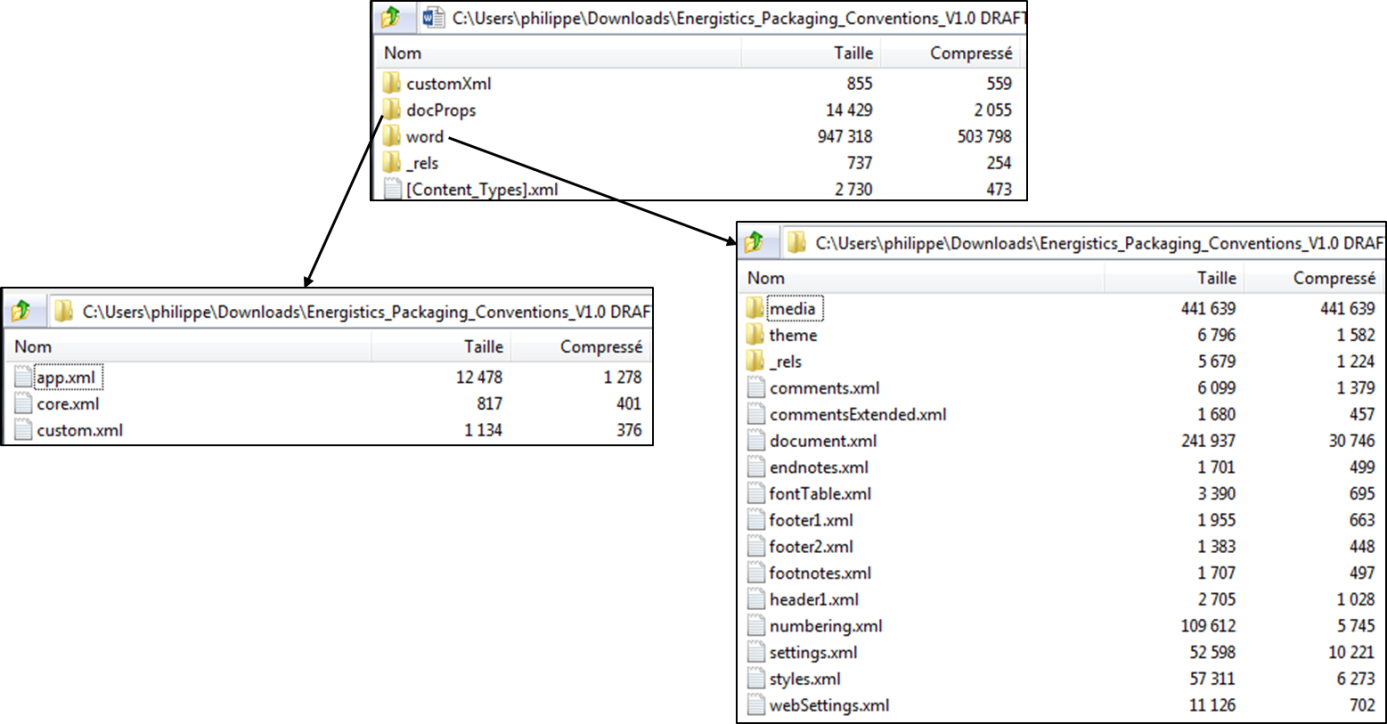2.2 OPC Key Concepts
| Topic Version | 1 | Published | 09/15/2014 | |
| For Standard | EPC v1.0 | |||
This section provides an overview of key OPC concepts that are important to understanding how an OPC package is structured and how it works. Figure 2.2-1 shows an example of an OPC package. The table below lists and describes the key concepts and includes references to more information available in this document.

|
OPC Concept |
Definition, Purpose, and Requirements |
|---|---|
|
[Content_Types].xml |
This file contains the content type, a description of the type of content of a part, for each part in the package. This file name is a reserved name in OPC. For:
|
|
Relationship folders and files (_rels) |
Parts may contain references to other parts in the package and to resources outside of the package. Uses _rels folders and .rels extensions, which are reserved for this purpose. For:
|
|
Core Properties |
The identifying information of a package, which includes key metadata such as the creator of the package and the date it was created. Core properties are now optional in OPC, but are required for EPC. For EPC-specific information, see 3.5 Core Properties in EPC. |